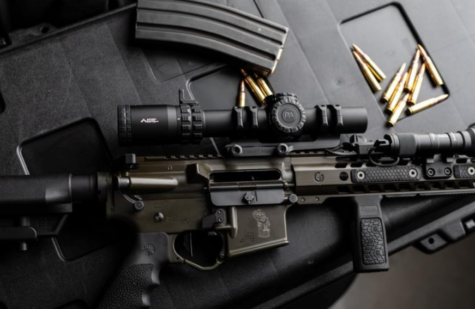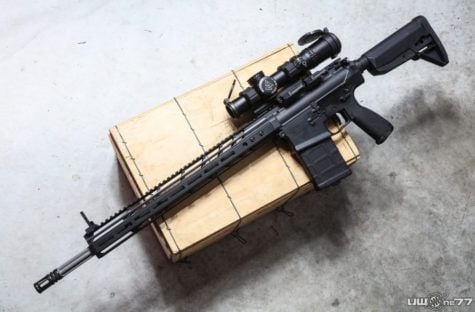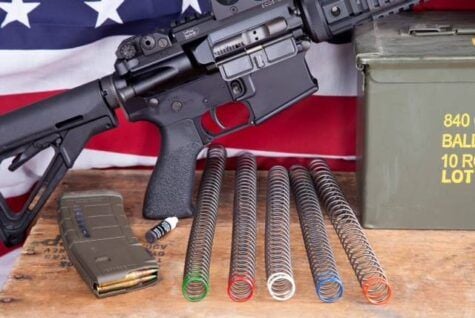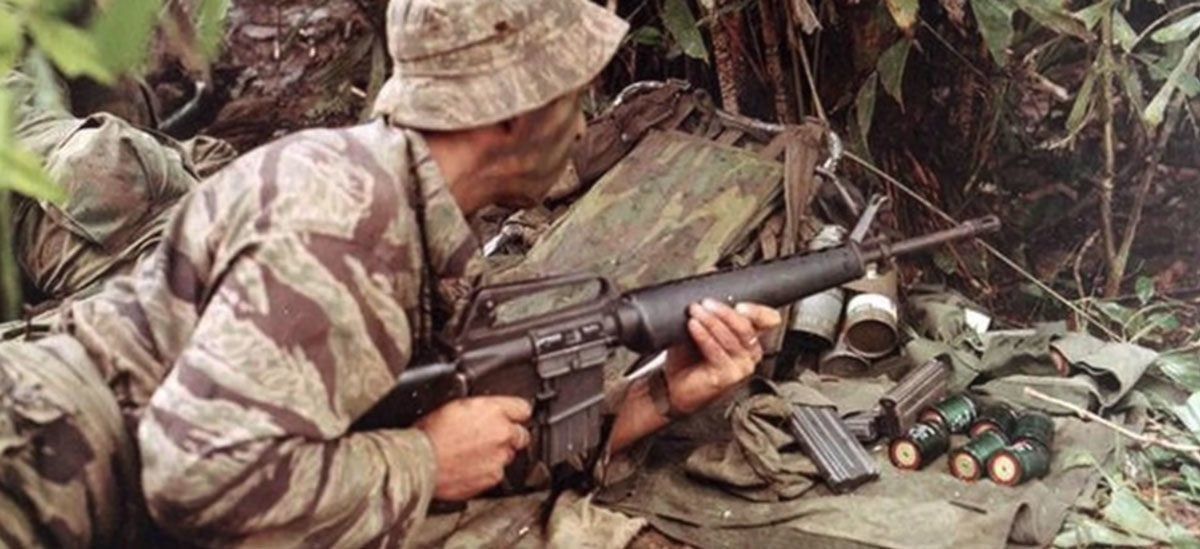
To learn “what happened to the M16 in Vietnam,” it’s hard to think of someone better to ask than Chris Bartocci at Small Arms Solutions. Frankly, there are few active in the industry that know more about the platform and its history than Chris, who has been intimately involved with it for almost his entire life. Just scratching the surface of his career, he has worked as a firearms examiner, author of countless articles and the book, Black Rifle II, and as technical specialist at Colt.
In our first in a short series of articles with Chris, we wanted to chat with him about the early history of the M16 in Vietnam, and his video on the topic, “What Happened with the M16 in Vietnam?“, which you can watch now below.
Q: Chris, I’d like to discuss one of my absolute favorite videos Small Arms Solutions has done, “What Happened to the M16 in Vietnam?” It’s a must-watch…can you talk about how that came about?
Chris Bartocci – From the beginning of my involvement and interest in the rifle…it was the Vietnam era, and there was a lot of talk about the rifle not being reliable and getting people killed. I was curious about how a rifle that tested so well to the point where it got adopted, then all of a sudden things started going bad with it. I spent a lot of time studying that and it led me to a lot of different places in my search for what exactly happened.
When I worked at Colt, I basically lived there during the week. When I got out of work, I had no family or anything there. Because of that, I spent my time in the archives. I went over literally every engineering changing order that the M16 had since the early 1960s…every single change, when it went into production, and why. That’s the degree that I’ve been involved with this my whole life.
I then sought out and spoke with two of the gentlemen who were at Aberdeen at that time, at Rock Island, who did the testing…Mr. William Davis, and L. James Sullivan…
I also had the privilege of meeting Mr. Gene Stoner a couple of times before he passed away, and I had a few conversations with him.
“It was important for them to know…”
So, I studied exactly what happened with the M16 in Vietnam and the politics that were involved with it as well as why the rifles malfunctioned. To me, it was very important to get this information to the Vietnam veterans who had those opinions on the rifle because most of those guys know the rifles malfunctioned and people got killed because of it.
They don’t know why and they maybe don’t care why, but to me it was important for them to know that the rifle that was given by Gene Stoner and Armalite to Colt was the most advanced rifle on the face of the earth. It was the Army that who screwed the rifle up for their own reasoning.
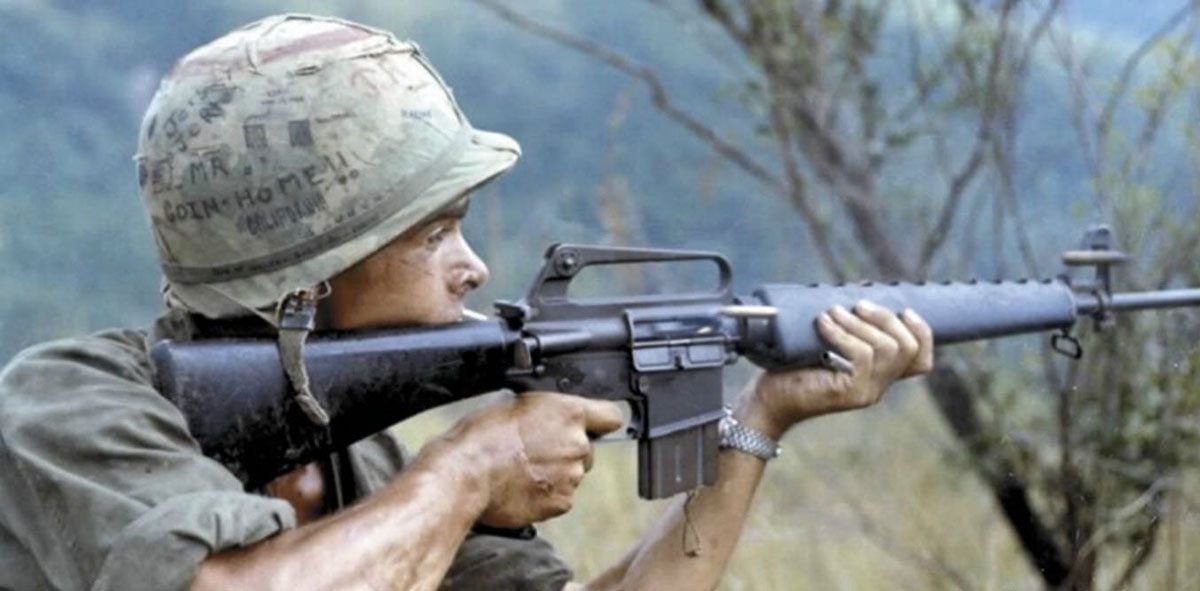
Q: In a nutshell, can you explain that screw up to readers who may not be familiar?
Chris Bartocci – The Army was very, very entrenched with the 7.62 NATO and also the U.S. Government arsenals that were pushing out M14s. The M14 rifle was outdated from the moment it came into production. It was supposed to replace a whole family of weapons. It was supposed to have the accuracy of the M1, the firepower of the BAR, the ease of control of the M2 carbine and it was supposed to replace the magazine capacity of the submachine gun. Well, in the end, it didn’t replace any of them…
So, when the war in Vietnam came about, it was clear that it was not the weapon for that conflict. The war in Vietnam involved close quarter battles…Engagements were ambushes, whether it was us ambushing them or them ambushing us. It was one or the other, and the only way to survive an ambush is to put down a higher volume of fire than the enemy. That’s the only way you were going to do it…to kill them as fast as could.
But there you have an M14, which you couldn’t control in fully-automatic. It was so long that you couldn’t really manipulate it in the jungle. So, the M16 was the rifle that was needed, there was absolutely no question.
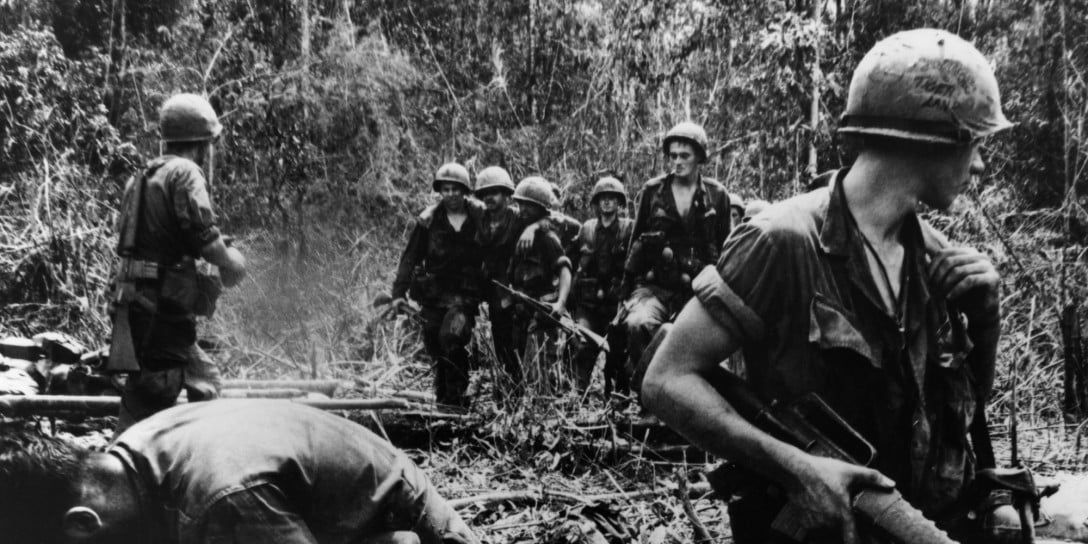
Ordinance Corps Rejects the M16 in Vietnam
That said, there was a bunch of politics that led to it being boycotted by the ordinance corps. According to the ordinance corps, there was no need for the M16 in Vietnam. They wanted to keep their gun – it didn’t matter if it was the right gun for the war or not. That’s where Robert McNamara ended up coming in and saying “why are you boycotting this rifle?”
He’s the one who had ordered the comparison testing between the M16, the M2, the AK-47 and the M14. All of the testing came back and said that the M16 was superior. So, it was McNamara who ordered the Army to get the rifle ready and issued to troops in Vietnam.
At that point, the rifle was supposed to go through a development phase. Well, the ordinance corps decided that the ends justified the means and they did not do that. They rushed the gun into service without going through the developmental phase. They did that, because they figured there were not going to be very many rifles anyway, they did not order cleaning kits, there was no proper training that was done.
Q: In your video about the M16 in Vietnam, you mention that very early on, the gun performed admirably. Can you talk about that?
Chris Bartocci – The first guns did very well. I had the opportunity to interview Lt. General Hal Moore. Some might be familiar with the movie “We Were Soldiers”…General Moore was the leader of the 1st Cav in the Ia Drang Valley. That was the first time that this weapon was used in a military engagement against the NVA or anybody. It was a unit that was completely equipped with the brand new XM16E1…and the rifle did incredible there.
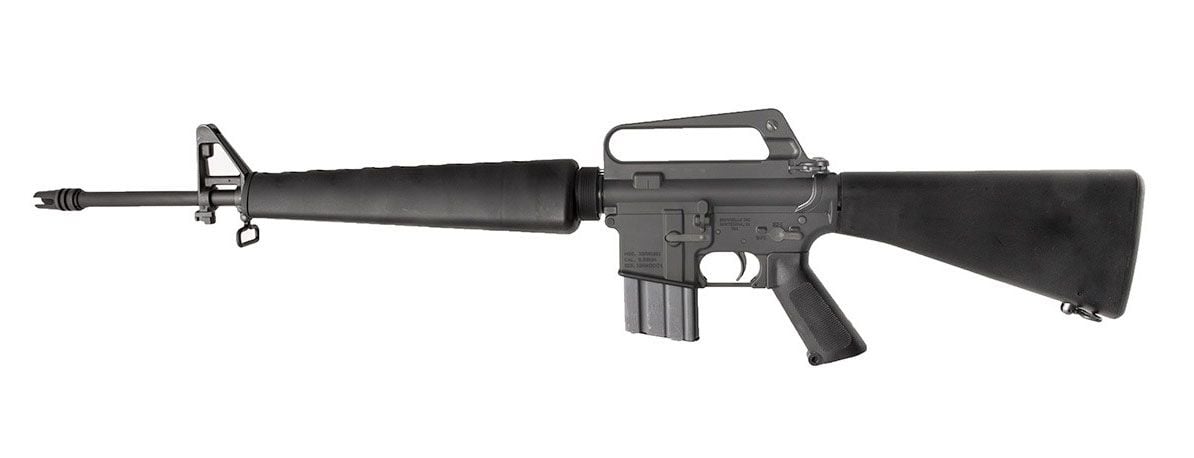
The Brownells XBRN16E1® AR-15 Rifle is a detailed reproduction of the first AR-style rifle issued to ground troops during the early years of the Vietnam War…including many of the features that made the XM16E1 famous. The gun is constructed with all new-production parts.
The guns they were using were brand new. They were using the proper ammunition. All of that battle was close-quarter, and when I spoke to Lt. General Hal Moore, he said that the gun had a major positive impact on the outcome of that battle. Obviously the biggest part was the artillery and the air strikes, but as far as the soldiers being able to engage targets at that close of an environment, that gun was absolutely necessary…Unfortunately, after that battle is when you started to hear about malfunctions.
Q: Can you go over some of the basic causes of these malfunctions? I think a lot of people might mistakenly believe it was just maintenance issues but in the video, you detail how that was not the case with the M16 in Vietnam.
Chris Bartocci – The Army had gone ahead and changed the propellant. They went to a ball propellant because they had a lot of stock left over from World War II. The problem was ball propellent, although it reached the same peak pressures at the IMR propellant, it had a much sharper pressure curve. This meant that it burned significantly faster.
Before we started our interview on this topic I told you that the weapon is far more complex than a car, well…that’s important. This rifle is a system. In that system you have a rifle, a projectile, propellant, propellant charge, a primer and a cartridge case. When you alter any one of those, you alter the overall dynamics of the rifle.
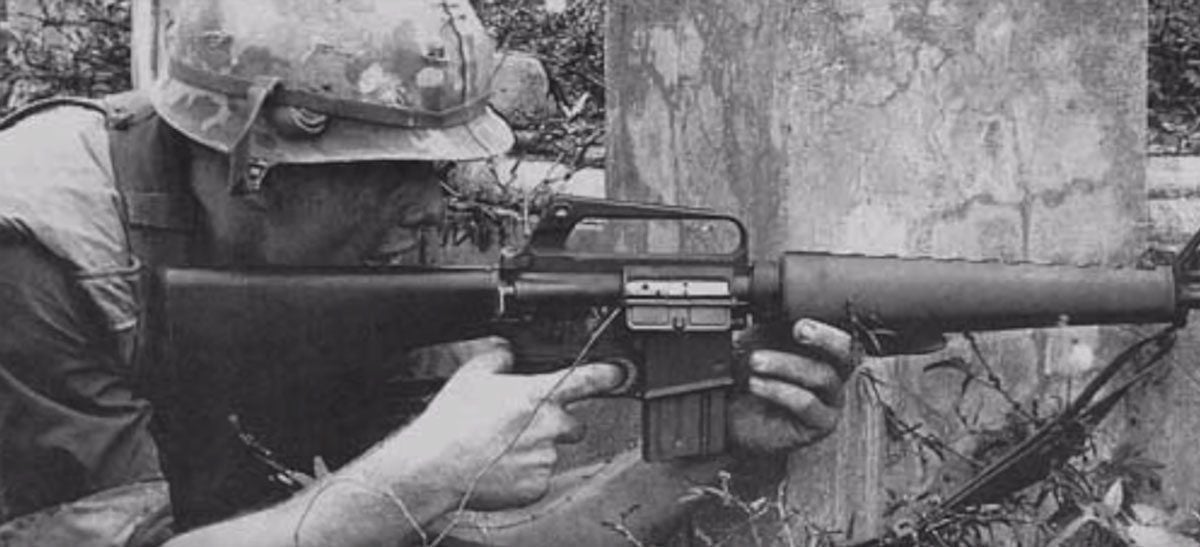
Well when they put the ball propellant in there, it caused that much sharper pressure curve, which caused a much faster cyclic rate…So, you have a rifle that was designed to fire something like 700 rounds a minute going to nearly 1,000 rounds a minute. Because of that, you had parts breakage, failures to extract, and of course, once you have gas port erosion, the rifle would fire even faster.
Q: You talk about another catastrophic issue with the M16 in Vietnam with regards to the internals of the firearm…
Chris Bartocci – Yes, the next issue that came up was failure to chrome plate the chamber. Once an auto-loading rifle has a pitted chamber, you’re going to have cartridge cases that get lodged in there. So, there is this fallacy that guys in Vietnam were having malfunctions and the only way to get the guns going again was by cleaning them…that’s not true. Whether you have a clean corroded chamber or a dirty corroded chamber, you are going to have failures to extract.
The M16s work just fine dirty. But you had a corroded chamber where you had a cartridge case getting welded into the chamber to where you had to knock it out with a cleaning rod…and that’s where the cleaning rods came from.
M16 in Vietnam – Negligence Compounded
So you had negligence when it came to failure to chrome plate the chamber, you had negligence on changing propellants without testing first…and then it gets even worse. As Colt was there manufacturing the rifles, they received the new ball ammunition to test fire the rifles to make sure that they worked to specification before they were shipped.
Well the Army was called by Colt and told that they could not pass the rifles with this new ammunition. They told them that the cycle rate was way too high. Well rather than taking heed, instead the Army swapped out ammunition with proper IMR ammunition. The rifles were then tested and accepted with IMR propellant. However, once they got to Vietnam, they were again using ball propellant…giving soldiers ammunition that they knew was going to fail.
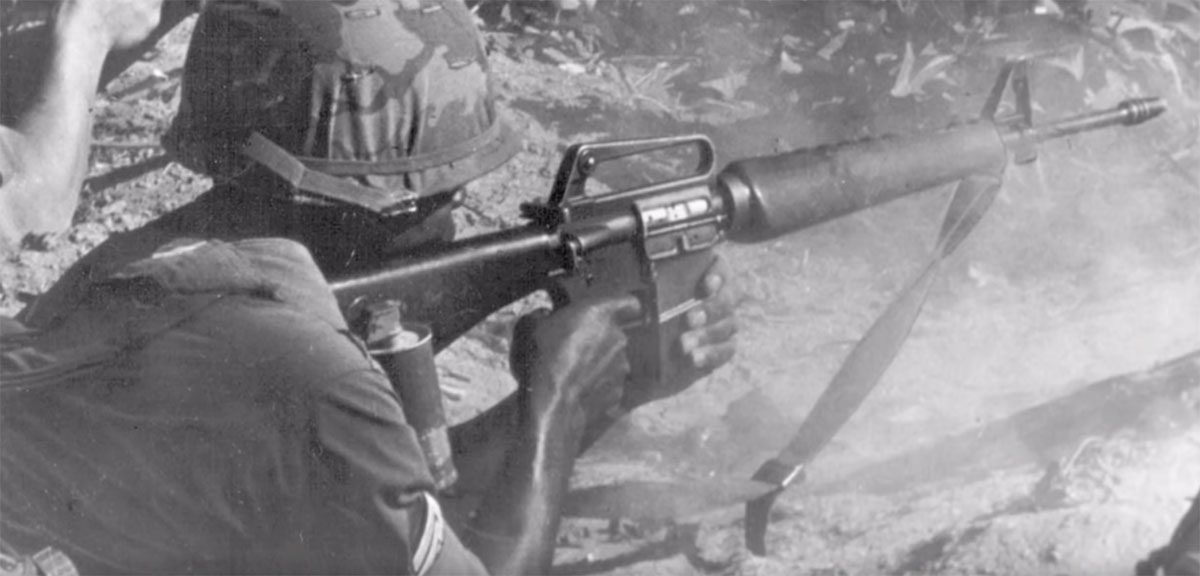
M16 in Vietnam – “The Ends Would Justify the Means”
You basically have a conspiracy that happened between Ordinance Corps and the Army to make this rifle fail. They thought the ends would justify the means and the Army would drop the M16 in Vietnam because it was a piece of garbage and go back to the M14. That is the reason why I decided to make the video. That video was made for the Vietnam veteran for them to understand what happened.
They were not given a piece of garbage. They were given the most advanced military rifle in the world, but like any piece of equipment, before it is issued to the troops at large, it has to go through a development program. But you had a whole system set up that failed – because of either tradition, or their own interests…interest in keeping their own Arsenals going.
I talk about how after a 1968 Congressional hearing on the M16 in Vietnam, the ordinance corps was disbanded by McNamara. It was the last time they were going to fail the American soldier, and it was also the last time you ever saw U.S. Government run arsenals.
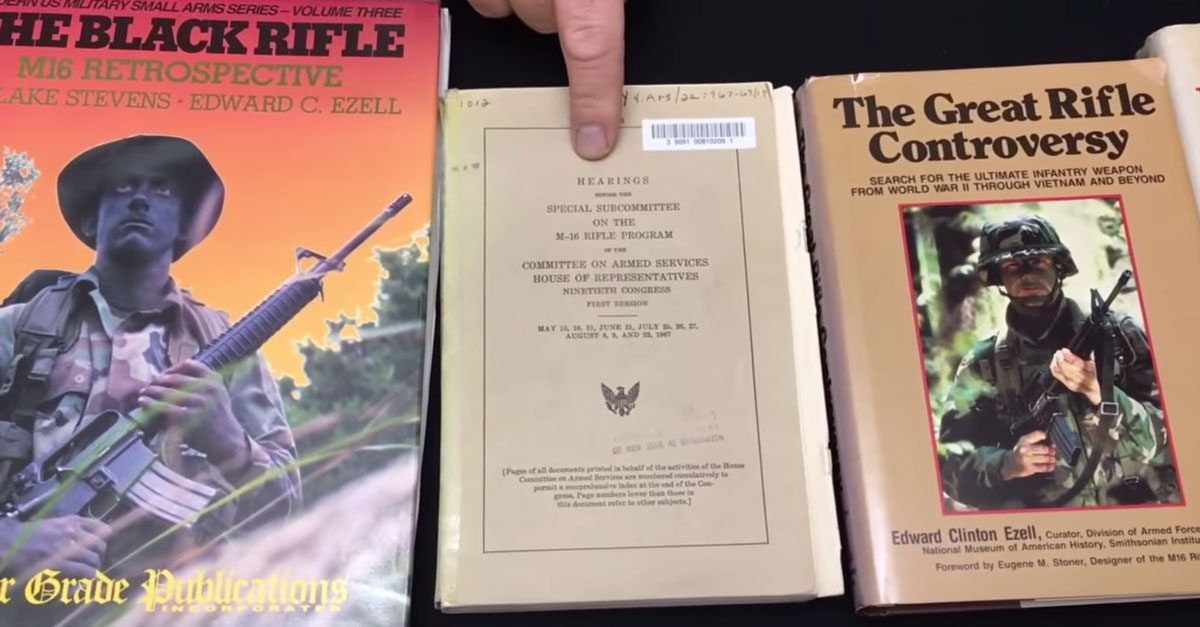
Everything after that is now done privately, outside of the Army to get away from all of the issues that would go on in the past with people doing what was best for them, but not what was best for the U.S. soldier.
In the end, after ordinance corps was disbanded and after Robert McNamara ordered the gun to get fixed, the cleanup began. New tools came out, there was training, there was proper chrome plating, they improved the bolt to deal with the ball powder. They did that as it was not that the rifle couldn’t work with ball powder, it just wasn’t designed to. They had to design it to work at those higher rates of fire.
Q: And this is where the M16A1 enters the picture?
Yes, that’s what the M16A1 is…you have the proper buffer to avoid light strikes because of the higher cyclic rate, you have the proper materials for the upper and lower receiver, a shot-peened bolt, a chrome plated bolt and chamber. And with these changes, problems went away…troops who entered Vietnam after 1969 or so saw few problems.
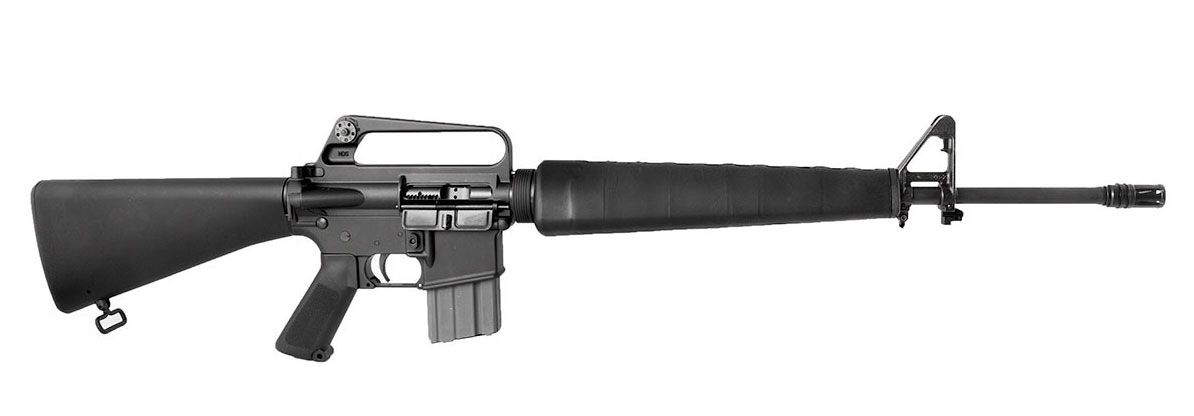
The Brownells BRN-16A1® AR-15 Rifle provides modern-day enthusiasts with a faithful reproduction of the classic M16A1 design.
In conclusion, there are just a lot of fallacies out there about what happened with the M16 in Vietnam. I have seen so many videos and television programs where they get it completely wrong. People should understand that there’s a science to this but again, the video is for the Vietnam veteran. It gives them the truth of what happened with the M16 in Vietnam.
###
Chris Bartocci is a living, breathing encyclopedia of the AR platform, and is someone we have long wanted to interview here at ARBuildJunkie. It’s was a privilege to be able to speak with him and we look forward to sharing more with you from our discussion in the days ahead.




